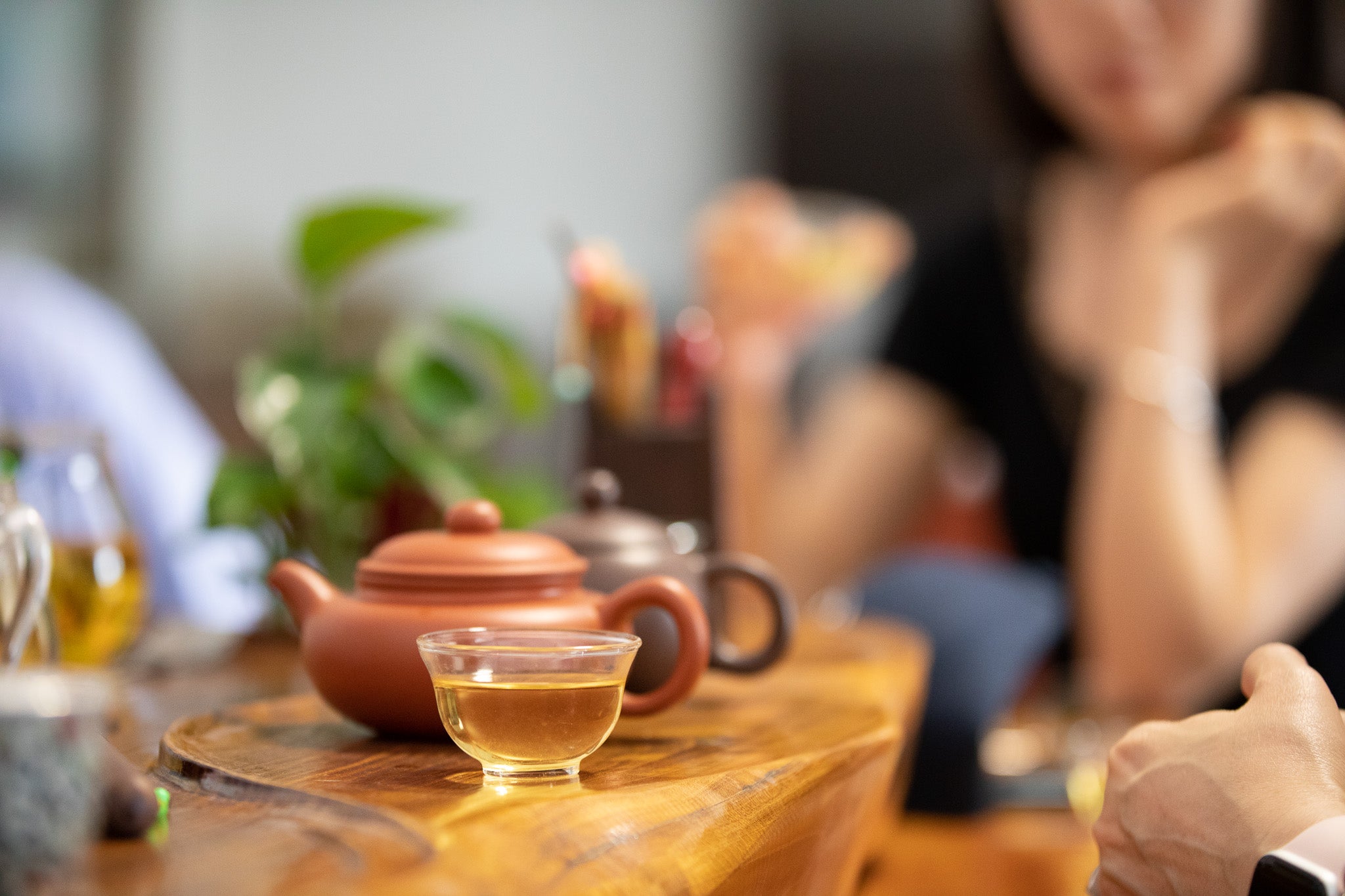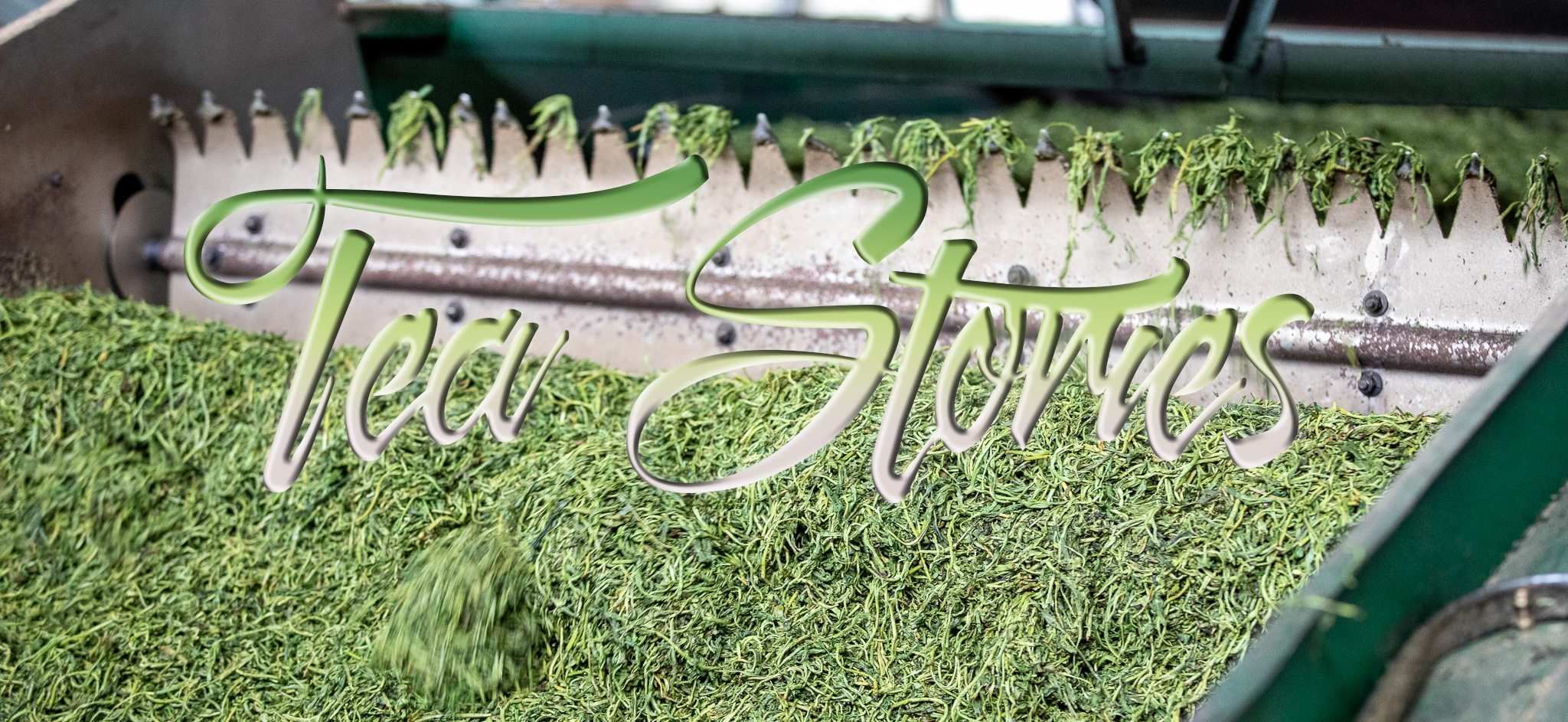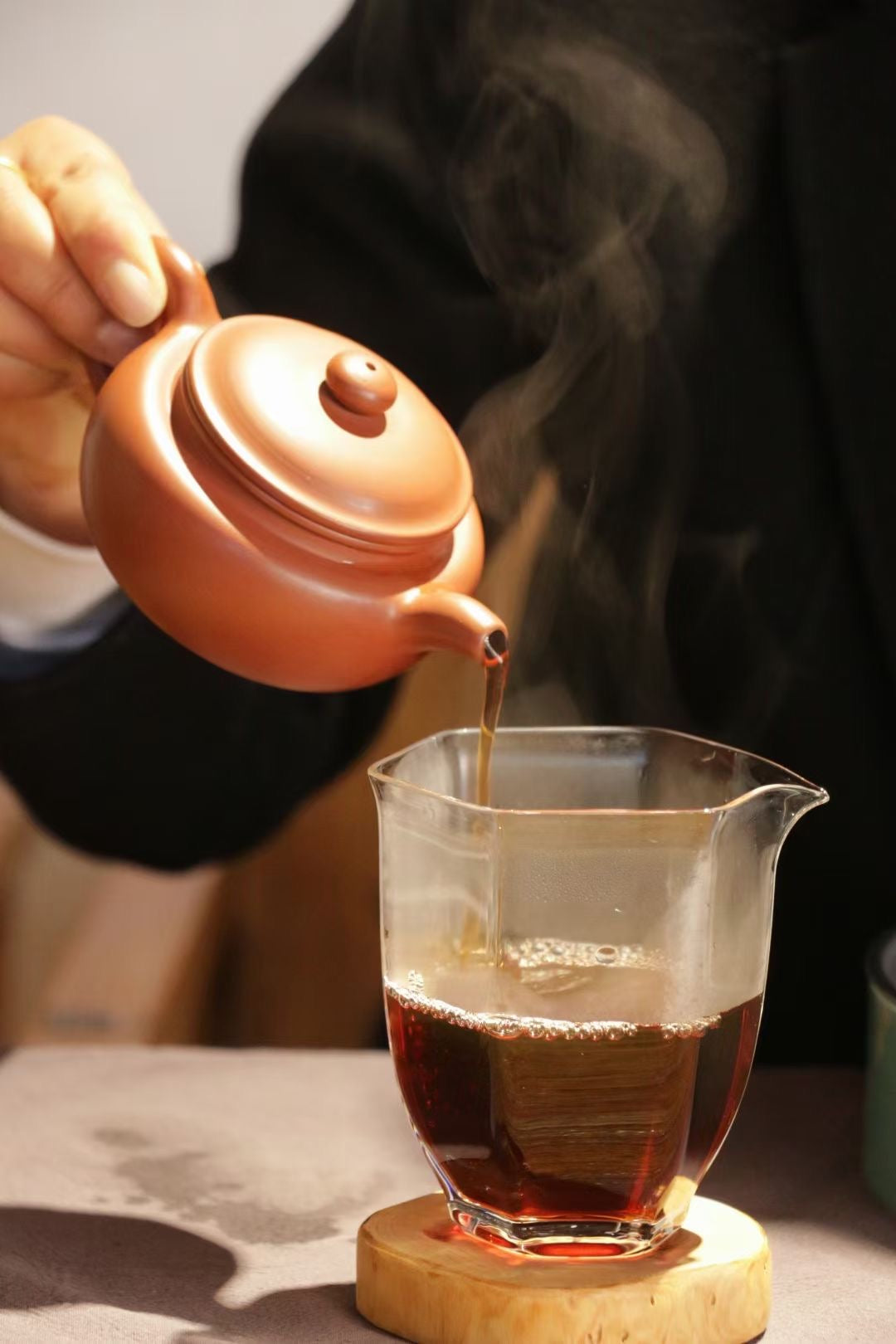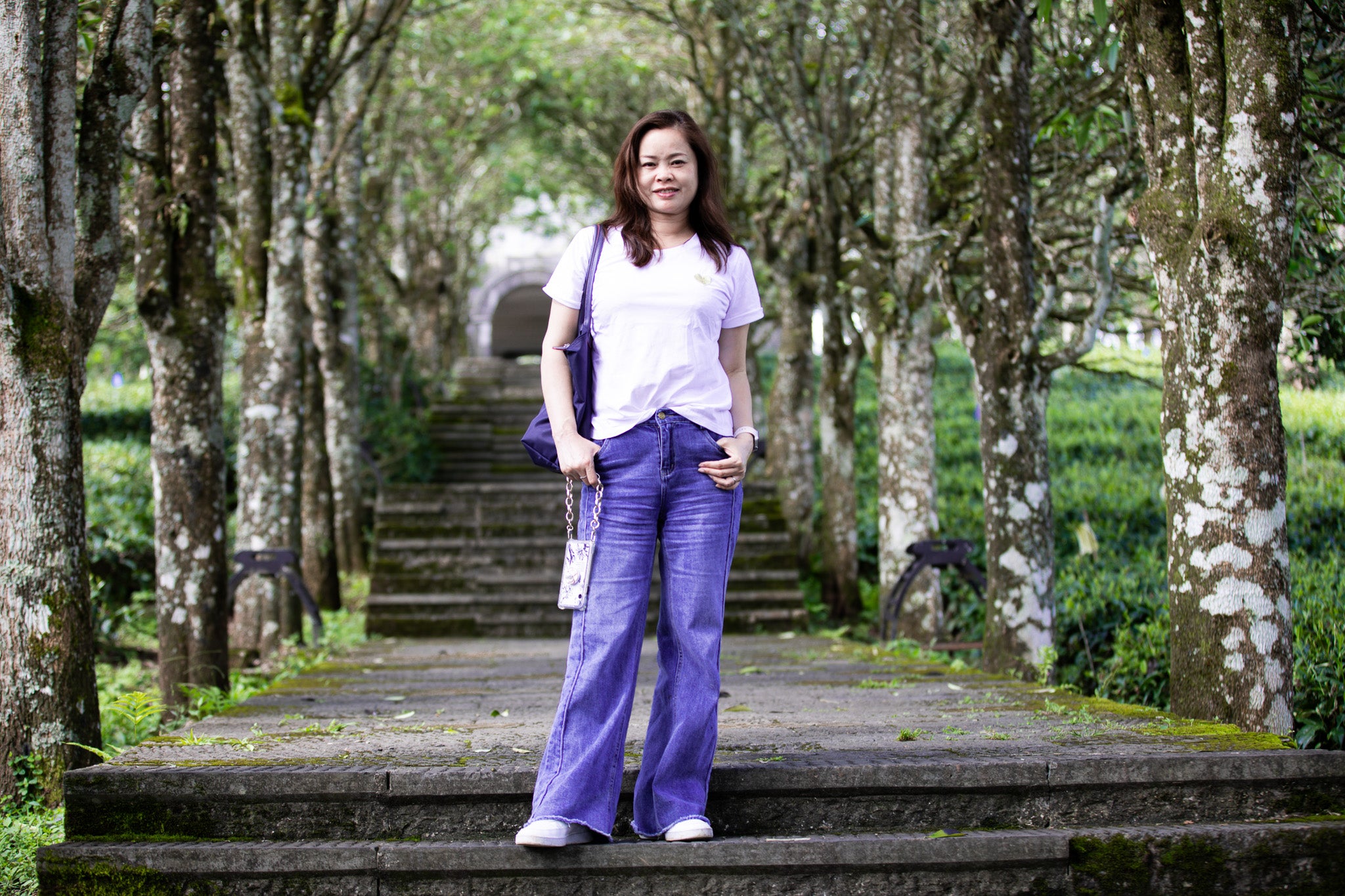Video Series
Brewing Tea with Hong Kong Actress Chung Chung

About The Teas...
White Teas
White tea holds the distinction of being the tea variety with the longest history in China. Among the different types of white tea, Yunnan white tea stands out for its exquisite flavor and unique production process. During the Qing dynasty, Yunnan white tea was highly regarded and even served as a tribute tea to the royal family.
Read more about White TeasGreen Teas
After the founding of New China, the tea industry has experienced rapid growth, with green tea emerging as a frontrunner in production and sales. Green tea, known for its health benefits and refreshing taste, has become a symbol of Chinese culture and tradition. In recent decades, the mechanization and automation of green tea production have significantly improved, leading to higher product quality and increased output.
Read more about Green TeasBlack Teas
Black tea, a popular beverage enjoyed by many around the world, has a rich history that can be traced back to the Ming Dynasty in China. Prior to this period, historical records do not mention the existence of black tea, making the Ming Dynasty a pivotal point in the development of this beloved drink.
Read more about Black TeasOolong Teas
During the Qing Dynasty in China in 1717, approximately 300 years ago, ancestors from Fujian, China, transplanted tea trees to Taiwan for
cultivation. In 1866, British merchants visited Taiwan to explore the camphor trade and discovered the business opportunities of Taiwanese tea leaves at the same time, thus opening up the trade of exporting tea leaves. At the end of the Qing Dynasty, Taiwanese oolong tea first appeared in the international market, known as Formosa Oolong Tea. In 1971, Taiwan experienced a foreign exchange crisis which caused a financial storm and dealt a heavy blow to the tea industry. Tea leaves were stagnant, and some tea plantations could not continue to farm and operate.
Puerh Teas
When it comes to the historical stories of Pu'er tea, there are truly too many to tell, and it is impossible to finish! Chinese Yunnan Pu'er tea, as one of the traditional famous teas in China, has a long history and a unique development trajectory. Pu'er tea originated in Yunnan, and archaeological discoveries show that Yunnan has a history of tea tree cultivation of more than 3000 years, with the Bulang people in Yunnan offering tea as a tribute to their ancestors. The transitional ancient tea tree tea of Bangwei is an living fossil of ancient Pu'er people's cultivation and domestication of tea trees, witnessing the long-standing tradition of tea cultivation in the region. The production process and variety development of Pu'er tea can be traced back to the Tang Dynasty. During the Sui and Tang dynasties, tea entered the main range of Chinese beverages, and Pu'er tea in Yunnan even became a tribute to the imperial court, deeply loved by the royal family and nobles.
Read more about Puerh Teas
Practical Tips
Which Tea is right for you?
Understanding the nutritional content of tea is essential for maintaining a healthy lifestyle. Whether we are tea enthusiasts or simply enjoy a cup from time to time, knowing what we are consuming is crucial for making informed decisions about our health and wellbeing.
The chemical composition of tea is a complex and intricate subject, with thousands of compounds found in both the tea plants and tea leaves themselves. Some compounds go through chemical reactions, breaking down or combining to form new compounds during the growing and processing stages. Some compounds change again when brewed in hot water.
The main compounds in tea can be simplified into seven categories: polyphenols/ Amino Acids/ Minerals/ Thearubigins/ Vitamins/ Polysaccharides/ Caffeine.
Read the full article...How to Brew your Tea?
It's important to understand that the way in which you brew your tea, as well as your mindset at the time, directly influences the quality of the tea.
When brewing tea, it's crucial to approach the process with a sense of calmness and focus. By being quiet and mindful, and maintaining a relaxed demeanor, you can enhance the overall experience of brewing and enjoying your tea.
Pay attention to the tea leaves, the water temperature, and the brewing time, as these factors play a critical role in the flavor and aroma of the tea.
The right combination of tea leaves, water temperature, and brewing time will ultimately determine the quality of your tea.
Whether you choose to indulge in a solitary moment of tea appreciation or gather with friends for a tea party, the art of brewing tea demands attention to detail and a willingness to savor the moment.
Read the full article...Reflections from the Founder
Tea & Life
Drinking tea, an ancient and wise practice, has become a necessity for someone living in a bustling city. Over the years, I have profoundly experienced the impact of organic tea on my physical and mental health, as well as my quality of life. This is a journey that i wish to share with everyone.
Organic Certification
To drink healthy and clean tea, the first choice must be organic tea. But what exactly is organic tea? Organic tea is grown and processed without the use of synthetic chemicals or genetically modified organisms. This means that pesticides, chemical fertilizers, growth regulators, or synthetic food additives are used during its production.
Read the full article...Single Estate Terroirs
Single estate tea refers to tea leaves that are grown in a specific, uniform environment, typically within the boundaries of a single tea garden or region. This means that all the tea leaves come from the same tea trees, which are managed and planted uniformly, and are grown under the same conditions in terms of climate, altitude, soil, and water.
Read the full article...Tea Gardens
When I think of terroir, I can't help but think of French wines. The word terroir is often seen on labels of French wines as Terroir, Produit du terroir. Terroir refers to the specific characteristics of the environment in which a particular agricultural roduct is produced. This includes the climate, terrain, soil, altitude or tea varieties, production techniques, and the people involved in the process.
Read the full article...Tea Leaves
When we talk about the leaves of the tea tree, perhaps these questions will naturally arise in your mind: how did tea come about?
Who discovered tea first ? When did tea come into existence?
Read the full article...





